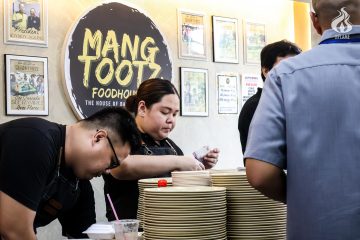THE MOST bittersweet days of the year are those that come after Christmas Day. One basks in the lull brought by the excess of Noche Buena and in the sense of home, hoping for the days to extend.
But one also knows that soon, the parol or Christmas lanterns will disappear, the air will grow warmer, and the familiar season will end. One thinks of the days it will take before Christmas arrives again.
But not everything about this season disappears.
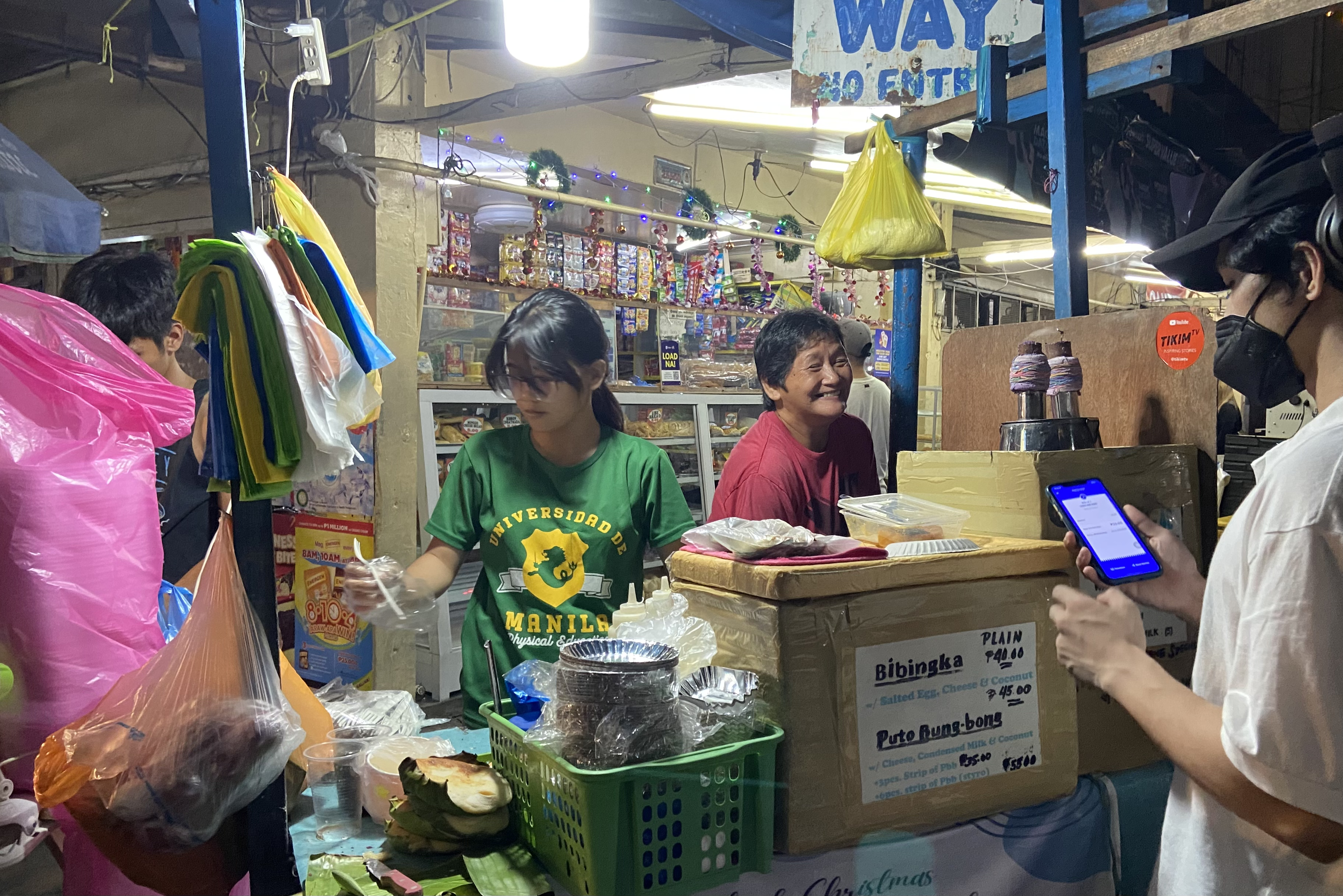
At the corner of Padre Campa and Delos Reyes Street, Magdalena Castro, or Ate Baby to her loyal customers, greeted a hungry and eager crowd with a smile that seemed to beam through the steam and smoke of the street. Her stall, simply called “Puto Bumbong at Bibingka sa P. Campa,” has gained traction in recent months. It has been featured on trending videos on YouTube and TikTok.
It was in its usual mode one night in mid-December — fast, lively, yet laidback. Four small clay ovens called bibingkera were all fired up with coals above and below; every now and then, a vendor carried a large tin pan to the middle of the street and fanned the large chunks of coal until glowing cinders flew, drawing shouts and giggles from frightened passersby.
The gentle heat below is supposed to lightly bake the cake, the vendor explained, while the harsher heat above is supposed to toast the surface until it becomes golden brown. The result was a bibingka fragrant with singed banana leaves, impeccably soft and buttery, with the savory slivers of salted egg blending with the sweetness of the fresh coconut meat.
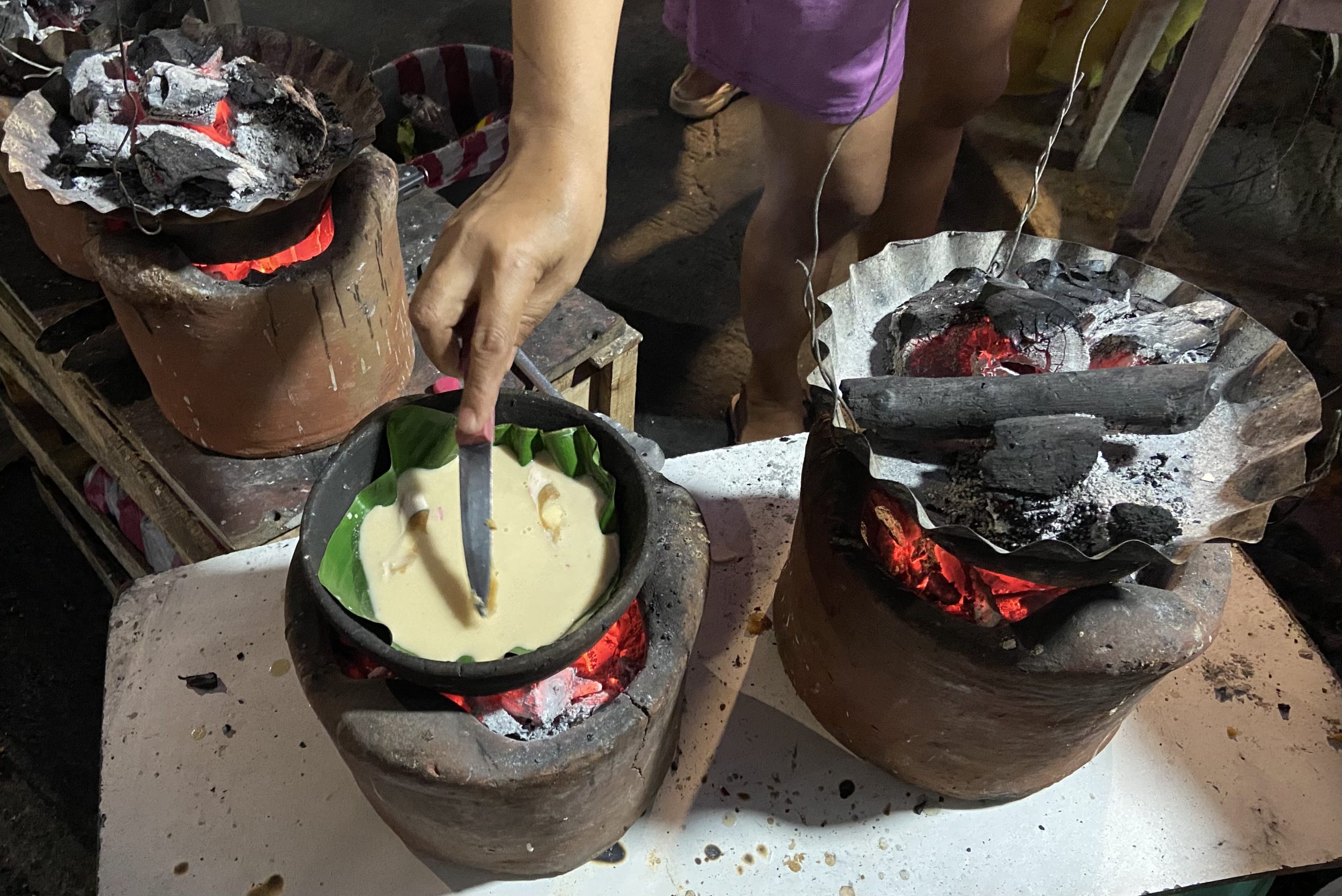
The stall usually churns out 200 pieces of bibingka every night during December, Ate Baby told The Flame. She has been selling puto bumbong and bibingka in the vicinity for 20 years. The recipe they use came from her lola (grandmother), who worked at the old Ferino’s branch at the Manila Hotel in the 1960s.
Ate Baby’s bibingka is still made the old-fashioned way — with galapong (rice flour), sugar, eggs and canned milk, topped with salted egg and shredded coconut meat — the way that Ate Baby’s grandmother taught her grandchildren. At present, Ate Baby’s grandchildren are helping their lola run their family business. In January next year, they will fire up the ovens and steamers again and sell the two Christmas favorites all year round.
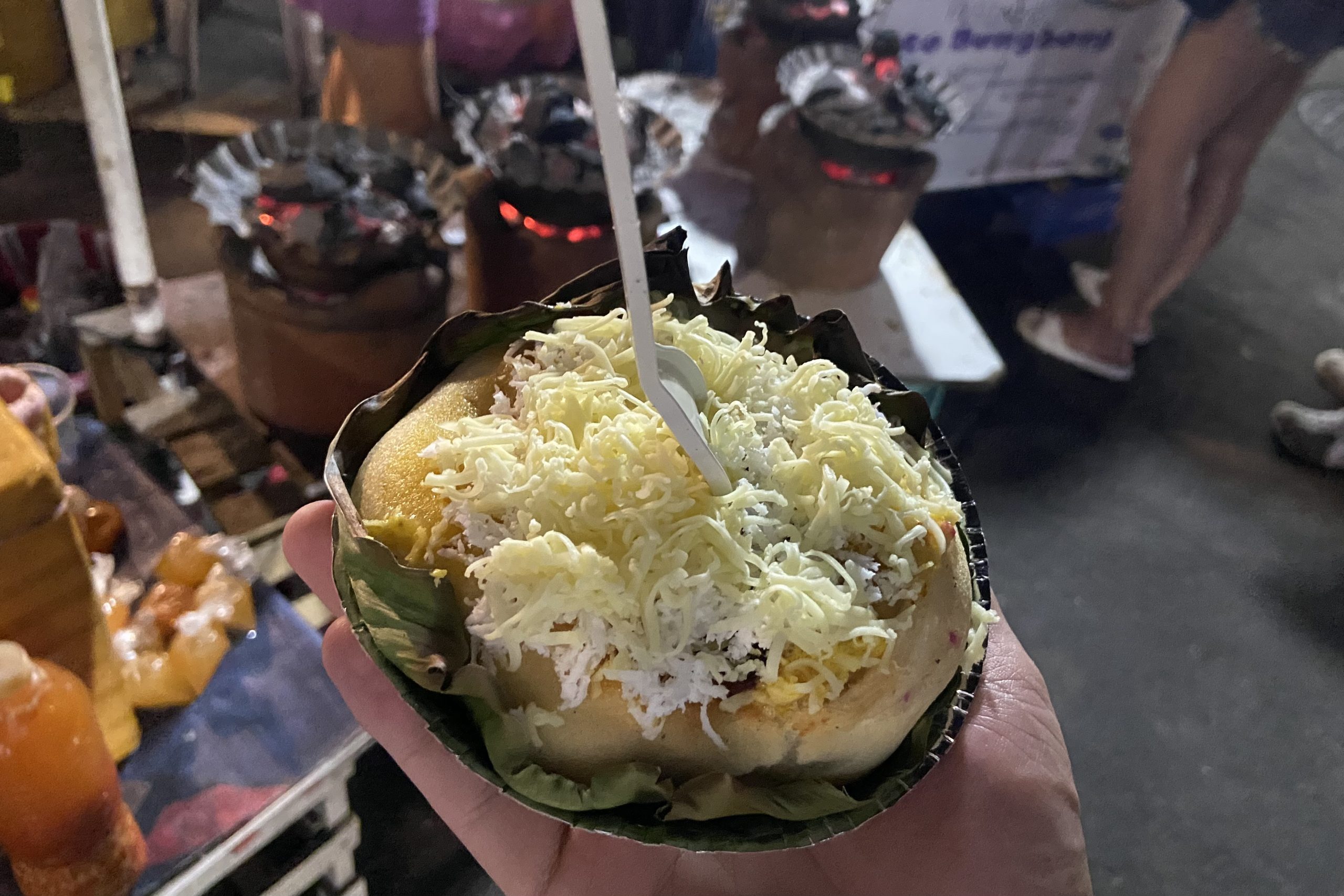
A similar story can be found at the corner of Barlin and Tolentino Street. Malou Petran, owner of the Kyle and Eus stall, learned how to make their puto bumbong from her lola, who also worked at the old Ferino’s.
“Noong bata ako, pinapanood ko lang ‘yung lola ko dati tuwing sinasama niya ako magtinda sa harap ng UST, hanggang sa natuto ako (When I was a child, I used to watch my grandmother whenever she took me with her to sell in front of UST, until I learned),” she said.
In the coming year, she and her family will also be selling the delicacies all year round.
She said the key to a good puto bumbong is having light hands, akin to having a green thumb. Indeed, Ate Malou and her children put the ground malagkit (glutinous rice) into the little bamboo cylinders called bumbong by sprinkling rather than stuffing; after the puto was steamed for seconds, the cylinder was lightly tapped, so that the puto shot out intact. One is entranced by the swift, steady movements of their hands.
She also added that the toppings are what make each puto bumbong different, the bland puto being a blank canvas to the creativity of vendors. In her version, the puto bumbong has sugar, margarine, condensed milk, heaps of processed cheese and shredded coconut meat. The result? A rich dessert, with all the variations of sweetness bound by the sticky puto.
Still, why do Filipinos love bibingka and puto bumbong? What is it about the two Filipino Christmas delicacies that make them persist throughout the year?
According to food historian Felice Sta. Maria, the bibingka was first described in the 1754 Tagalog dictionary “Vocabulario de la lengua tagala” as a comidilla, or a small meal, of flour made by the Tagalogs. Comidillas included other kakanin such as suman, palitaw, and kalamay. In the 19th and 20th centuries, the bibingka was already a ubiquitous year-round snack for Filipinos, not just served during Christmastime. It was very popular during the 20th century that some Filipinos had their own bibingkeras at home.
Traditionally, it was made with hand-ground galapong, tuba (to aid in rising, which was substituted with baking powder during the American colonial period), sugar, water, coconut milk (soon substituted with canned cow’s milk), and eggs.
Filipino author Gilda Cordero Fernando wrote that in the old days, children in rural areas would bring eggs to the bibingka vendor who would then ask them: “Bibingkang lalaki o bibingkang babae?” meaning, “With or without eggs?”
It is sometimes topped with kesong puti (native carabao cheese), salted egg and margarine, but always with shredded coconut meat. Customarily, as is still done in the provinces, free cups of hot salabat (ginger tea) are given to customers to be eaten with the bibingka.
Sta. Maria traced the puto bumbong’s origins to the Indian puttu. Traditionally, it was purely made with pirurutong, a variety of purple rice from which the dessert derives its color. Sta. Maria noted that in precolonial times, colored rice was served during feasts. Meanwhile, food writer Guillermo Ramos, Jr., noted that rice cakes steamed in bamboo have long been prevalent in maritime Southeast Asia, citing the putuh bambu of Indonesia.
In the 19th century, puto bumbong was sold by ambulant vendors on the streets of Manila, as shown by the illustrations of Jose Honorato Lozano. It was simply sprinkled with sugar and shredded coconut meat. Only in the 1950s was margarine added. Today, puto bumbong is commonly tinted with purple food color.
Interestingly, National Artist for Literature Nick Joaquin wrote in his Almanac for Manileños that puto bumbong and bibingka were not the favorite Christmastime fare of Manileños during the early decades of the 20th century. He wrote: “In those days there were no puto bumbong stalls in the patio. Where Manileños repaired to after the Simbang Gabi were the Chinese snack shops which offered, at dawn hour, deep-fried bicho-bicho and buche still sizzling from the caldron.” Only in the years after the Second World War, when the city became “provincialized,” he wrote, did the delicacies become common in the city.
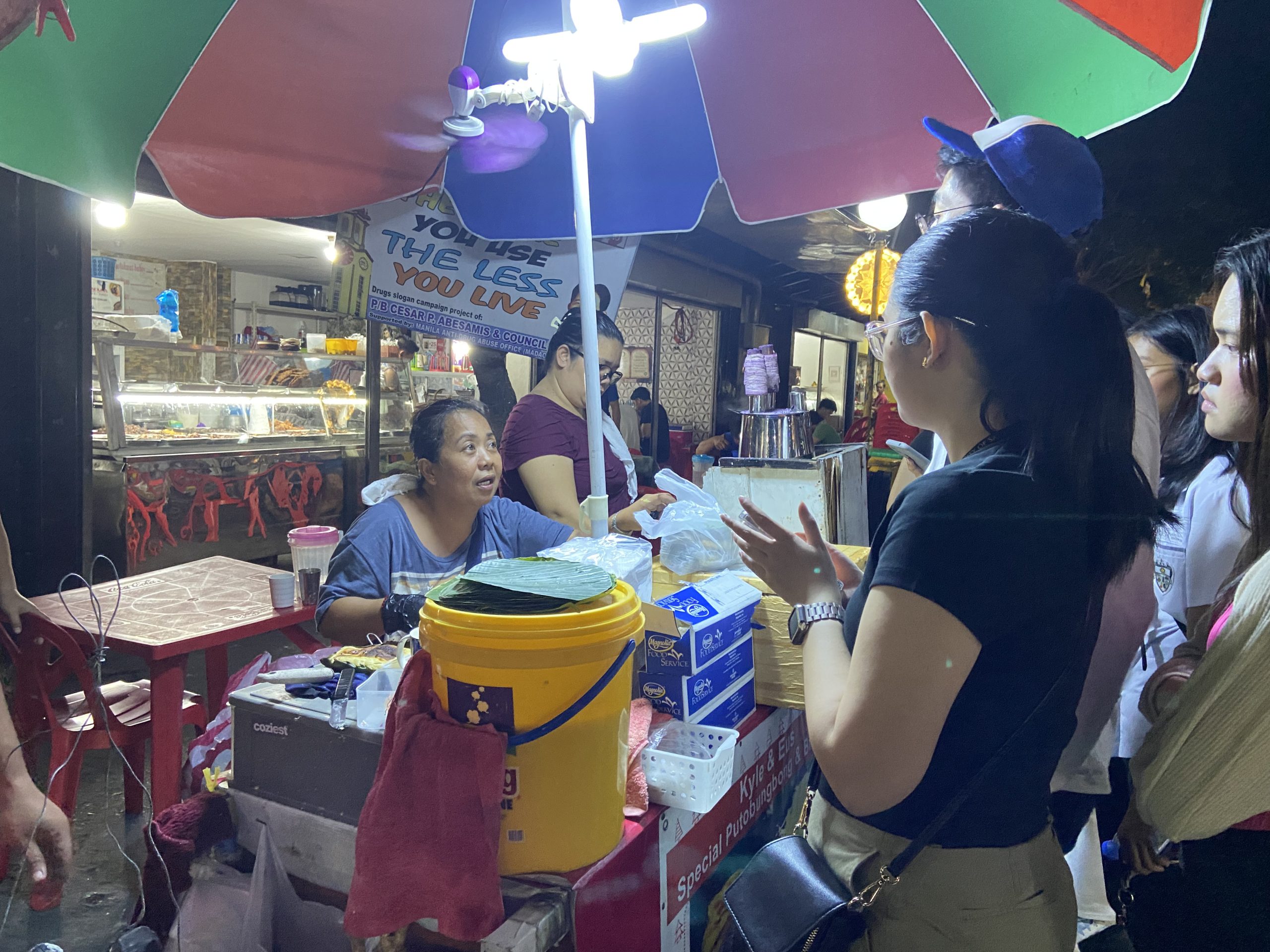
Indeed, it was through the rich, arable land in the Philippines that the bibingka and puto bumbong were made. In the same way, it was the farmers of the country who, having attended the early Misa de Gallo (early morning mass), ate these hefty rice cakes to prepare for the long day of harvesting in the land. As the pioneer Filipino food anthropologist Doreen Fernandez wrote of kakanin, “It is as if our forebears, dependent on rice as staple and base and year-round pampabigat sa tiyan, gratefully gave it primacy of place in the celebration of the native Christmas.”
For the whole year, too, the bibingka and puto bumbong are cooked in the corners of the city and the provinces. These delicacies are reflections of the Filipinos’ relationship with nature, their adaptability to changing times, and their deep affinity for Christmas. Because of vendors like Ate Baby and Ate Malou, this culinary tradition is carried from one generation to the next.
Through them, Christmas becomes an ever-present memory, a sweet, slightly toasty aftertaste that is remembered through rain or shine, in defeat or celebration, until finally, the parols whirl again, the air grows crisp and cold, the bells that invite devotion are heard during dawn and a breeze sweeps through the children singing carols. F


